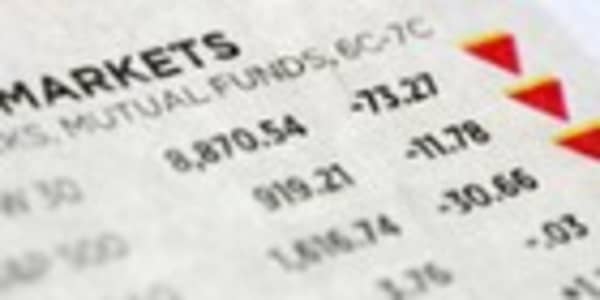Active fund managers have suffered through a perfect storm of obstacles the last three years — and investors have noticed.
Buffeted by markets made more efficient by high frequency traders, high stock correlation, and an increasing focus on costs, actively managed mutual funds have failed to earn their high management fees and lost ground to exchange traded funds, ETFs, and index funds.
“I ditched actively managed funds and started investing in ETFs a few years back,’’ says Ary Rosenbaum, an attorney in Garden City, New York. “I was tired of actively managed funds failing to meet their benchmark.’’
Active funds were unable to rescue investors from losses during the height of the latest bear market and have had difficulty beating their benchmarks ever since. What in the name of Peter Lynch is going on here?
For starters, the stock market is rising and falling in reaction to single events like the Flash Crash and the Greek debt crisis.
“The global macro picture is dictating market sentiment rather than company fundamentals,’’ says Mark Luschini, chief market strategist at Janney Montgomery Scott.
High frequency trading, HFT, magnifies market swings in either direction, often in a manner of minutes, leaving less agile managers struggling to keep up.
A macro-driven market also increases stock correlation—the tendency of all stocks to behave the same way. Stock correlation is now above 0.80, its highest level since the market crashes of 1987 and 2008 and well above its long-term average of about 0.45, according to Ned Davis Research. In a recent report, the firm recommended buying index funds if you believe correlations will stay high.
Correlation is bad news for stock pickers and the growing influence of ETFs makes it even worse. ETFs now account for 30-40 percent of the volume on the NYSE, according to Luschini, and 6.5 percent of total stock market value. Making the majority of those ETF trades institutional investors seeking the lowest cost exposure to a particular slice of the market.
When a high-volume trader buys a pharmaceutical ETF, for instance, he’s driving up prices across the sector. Active managers, on the other hand, select specific drug stocks that now rise and fall indiscriminately based on ETF buying and selling instead of fundamentals like earnings growth or new products.
also makes it a challenge for active fund managers to exploit mispriced stocks. Traders armed with high-powered software algorithms have thousands of data points at their fingertips and can profit from tiny price differences in less than a second.
“The research job of an active manager is more difficult, it’s harder to find mispricings,’’ says Chris Philips, a senior analyst with Vanguard’s Investment Strategy Group.
Fund companies like Vanguard, the largest manager of index funds, are beneficiaries of all the action generated by HFT. Vanguard’s index funds and ETFs are what Philips calls “price takers.” They fill index fund and ETF purchases at the end of the trading day, earning a market return that is a result of all the day’s buy and sell orders.
High-frequency trading and heavy ETF buying generates better prices for passive investors because the added trading competition narrows the spread between what a buyer is willing to pay and what a seller is willing to offer.
Ary Rosenbaum says ETFs, which trade continuously like stocks and can be sold short, allow him to take advantage of dips and peaks during the trading day. ETFs also offer direct exposure to assets like currencies and natural resources that are not as easy to access in a mutual fund format.
Transparency is another plus for index funds and ETFs. Investors know what they own when they purchase an ETF while active managers typically reveal their portfolio holdings with a 30 to 60-day lag.
More investors, both on Main Street and Wall Street, are opting out of a battle with the fast traders to hone in on expenses.
Index fund and ETF providers like Vanguard, iShares, and State Street Global Advisors have turned stock and bond exposure into a commodity, providing as targeted or broad exposure as an investor desires at minimal cost. As the table shows, the cost advantages of going passive are significant.
Buy side firms, Wall Street’s parlance for mutual fund managers, are now more focused on cost cutting than alpha generation, according to one trader. One way to lower costs is to trade less, a move that could hasten a massive shift of assets out of the active camp.
“Just their fee structure is enough to scare an active manager,’’ says Mike Cavanaugh of the cost advantage enjoyed by passive funds. Cavanaugh runs the Chicago registered investment advisor Know Your Options.
While active funds that adhere to a specific style or market cap have a tough time keeping up with index funds and ETFs, go-anywhere funds not restricted in what they can buy have tended to fare better. Luschini says funds likeFirst Eagle Global(SGENX), BlackRock Global Allocation, and IVA Worldwide still stand out due to their active approach.
Active funds as a whole should benefit when normalcy returns to the markets and the economy. In a more stable environment, correlations decline and stock picking matters.
But with the Fed poised to unleash another round of quantitative easing, normalcy still appears a long ways off. In the meantime, investors would be well-served to keep a lid on costs and let the high frequency traders set prices by investing through ETFs and index funds.




